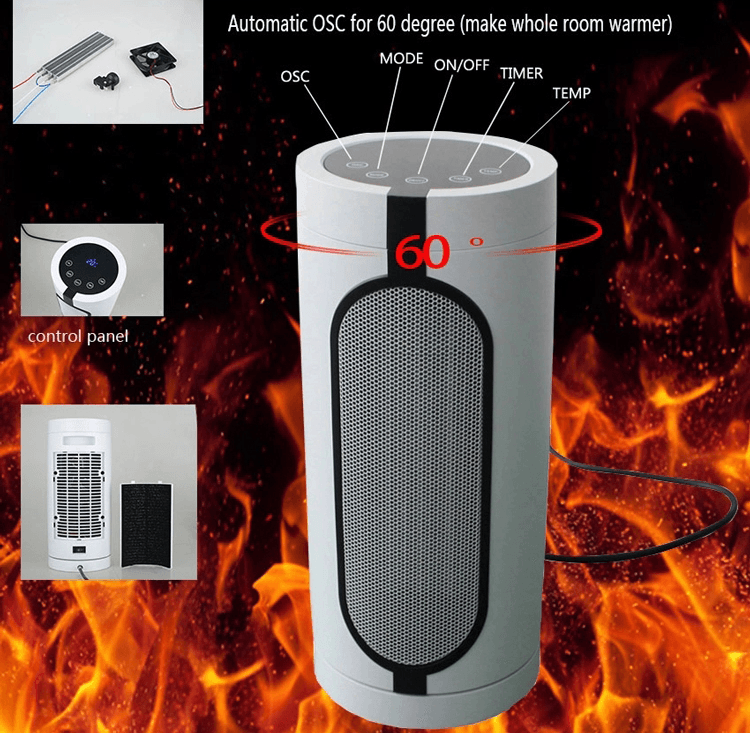Easysail appliance|Best space heater
If you’re tired of stockpiling blankets, extra socks, and heating pads to keep you warm, it might be time to consider getting a space heater. These powerful appliances are a great way to get cozy without installing a complicated heating system. If your radiator just isn’t cutting it or your officemate insists on keeping the window open, a space heater could be the perfect solution. The best space heaters are designed specifically to warm up spaces both small and large; they should be portable, effective, and fast-acting.
Buying a space heater is a worthwhile investment, but you want to make sure you look at all the information available about each product to determine which will be right for you and your space. To get you started, we’ve created this brief guide to help you learn more about these lean, mean, cold-fighting machines. Get ready to cozy up with your favorite books without reaching for your hat and gloves.
How to find the best space heater for you
There are five things you should consider in order to find the best space heater for your needs. Think about what type of personal heater you want, how much space you’re trying to warm, how much power your heater will need, what the safety features are, and finally, what special features might be available. If you’re able to get specific about your requirements, you won’t have any trouble finding a reliable, long-lasting unit you’re happy with.

What type of space heater best fits your needs?
There are three main types of heating, with a few sub-categories you should know about.
Convection heating is the most common and efficient type for single-room use. These space heaters work by circulating currents across an element such as an electric coil or oil, which are often blown out and drawn back in using a fan. Some models don’t include a fan, relying on natural airflow; this method is quieter but takes longer to heat an entire room. Ceramic heaters borrow from this method, using an internal, self-regulating ceramic element and fan to quickly heat a room.
Radiant heating is excellent for warming a targeted area like your bed or desk chair. They heat up almost instantaneously using quartz or other metals and a reflector to direct heat, though some will implement a fan. Infrared heaters are very similar, using infrared quartz bulbs to generate radiating heat. Unlike convection heating, this method will not warm up the air, making it better for targeted warmth. That said, it will heat a room if left on for a long time.
Micathermic heating is an efficient combination of convection and radiant processes. A micathermic heater radiates warmth off of a panel that is then circulated naturally throughout the room. To do this, these space heaters need to be reasonably large, but most models can be mounted on the wall to save space if necessary. Because micathermic heaters don’t use a fan, they are quiet and clean; they don’t circulate dust or pet dander, which makes them great for those who are allergy-prone or have asthma. Portable radiator heaters use micathermic methods to generate heat via oil encased inside.

A final word on finding the best space heater
Space heaters are a great way to save space, stay warm, and snuggle up safely during cold times. Choose the best space heater for you by examining safety settings, power specs, heater type, and any additional features you find exciting. As long as you know what your space needs, we’re confident you can find the right tiny furnace to keep you from constantly re-wearing your favorite fuzzy socks (we both know it’s time to pop those in the wash). Give your puffy coat a break by taking it off indoors as you slowly sink into the warmth of your new space heater.
Recommend article
-
While fans rely on wind speed to create a cooling sensation, air coolers depend on another key element—air flow. Air flow (sometimes called air delivery) determines how much cooled air the unit can push into your room, and it has a direct impact on comfort, humidity control, and cooling coverage. This article explains what air flow is, why it is essential to an air cooler’s performance, and how to choose the right air flow level for your space. What Is Air Flow in an Air Cooler? Air flow refers to the volume of air an air cooler can move per minute. It is usually measured in: CFM (Cubic Feet per Minute) m³/h (Cubic Meters per Hour) Higher air flow means the air cooler can deliver more cooled air across a wider area. Unlike a fan—where the sensation comes from wind speed—an air cooler relies on air flow ...
-
Many people wonder if simply circulating air can actually make a room cooler. While an air circulator doesn’t lower the room’s temperature the same way an air conditioner does, it does make your environment feel significantly cooler and more refreshing. Let’s explore how air circulation works, why it matters for comfort, and how using an air circulator fan can improve your room’s cooling efficiency—especially during hot summer months. The Science Behind Air Circulation and Cooling When air in a room becomes still, heat builds up around objects and people. Stagnant air traps warmth and humidity, making the space feel hotter than it really is. An air circulator fan solves this by moving air continuously around the room. This motion helps: Distribute cooler air evenly instead of letting it settle near vents or windows. Evapor...
-
An air circulator fan is one of the most versatile tools for improving indoor comfort. Unlike traditional fans that simply blow air in one direction, an air circulator is designed to move air throughout the entire room—creating a continuous, balanced flow. However, to get the best results, where you place it matters just as much as how you use it. This guide explains the science behind airflow, the best positions for your air circulator, and how to optimize performance for both cooling and heating seasons. How Air Circulation Works Air circulators work by creating a steady airflow loop within a room. Instead of targeting one person, they push air across walls and ceilings, helping to mix warm and cool air layers evenly. This process: Eliminates hot or cold spots. Improves overall ventilation. Makes rooms feel fresher and more comfortable year-round. The...






